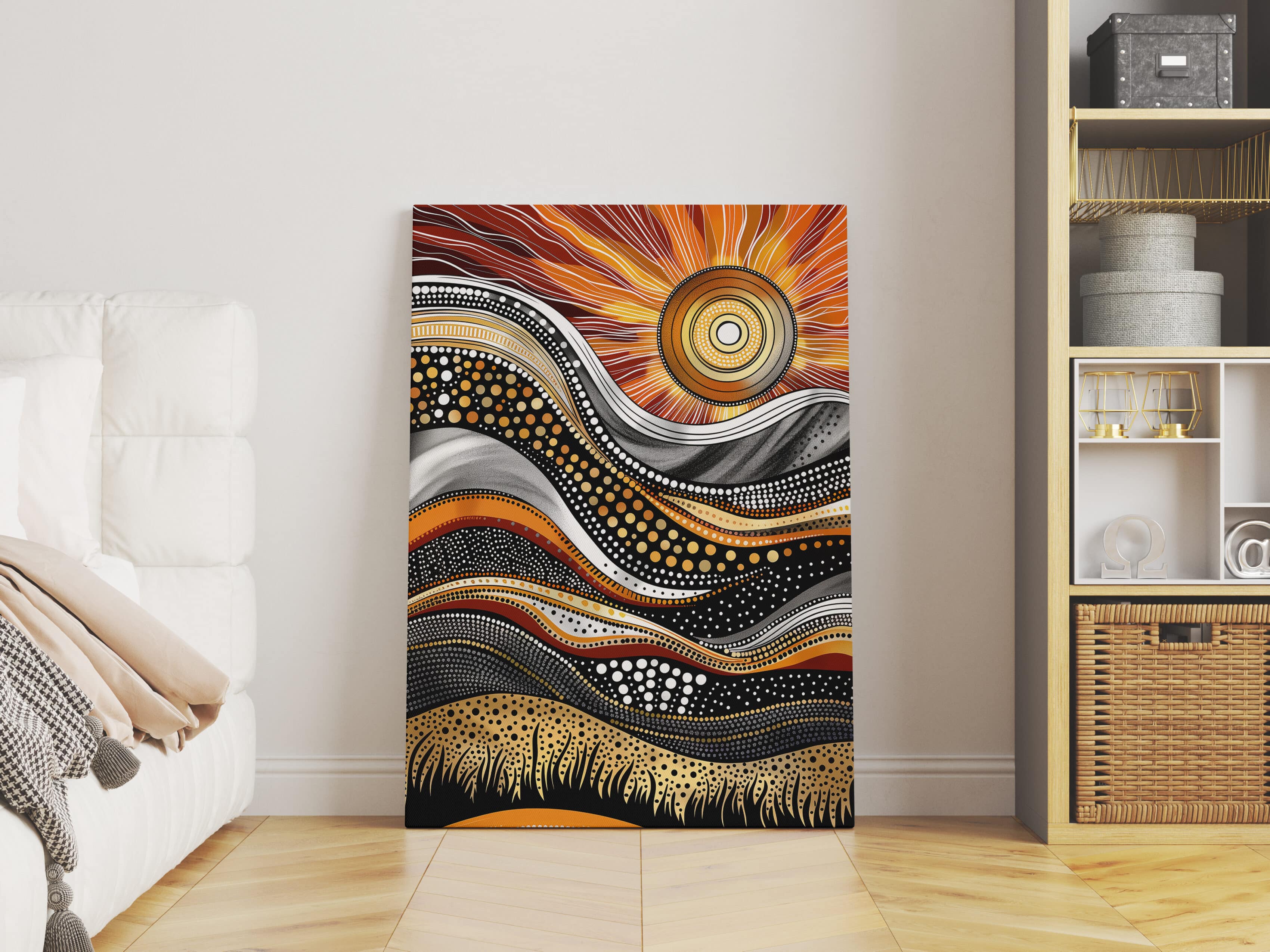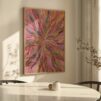
Aboriginal art, one of the world’s oldest continuous artistic traditions, is a powerful testament to the cultural richness and spiritual depth of Australia’s First Nations peoples. Over tens of thousands of years, this art form has evolved from ancient rock paintings and body art to contemporary canvases that command attention in galleries worldwide. This evolution reflects both a deep respect for tradition and a dynamic adaptability to modern influences. In this article, we explore the journey of Aboriginal art, tracing its development from traditional techniques to modern interpretations.
The Roots of Aboriginal Art: Traditional Techniques
Aboriginal art has always been more than just an aesthetic practice; it is a crucial medium for storytelling, spiritual expression, and the transmission of cultural knowledge. The earliest forms of Aboriginal art include rock engravings, cave paintings, and body art, all of which played vital roles in ceremonies, rituals, and everyday life.
- Rock Art: Some of the oldest examples of Aboriginal art can be found in the form of rock paintings and engravings, dating back over 40,000 years. These artworks, found in sacred sites across Australia, often depict ancestral beings, animals, and symbols related to the Dreamtime—the foundational mythological period when the world was created. Techniques varied from simple outlines using natural pigments to more elaborate and detailed depictions.
- Body Art: Body painting, using natural ochres and clays, is another traditional form of Aboriginal art. These designs were not just decorative but carried deep spiritual significance, often used during ceremonies to connect with ancestors and the spiritual world. Each design was unique to the individual’s clan or region, embodying the stories and totems of their people.
- Sand Painting and Ground Design: Sand painting is another ancient technique, where artists create temporary artworks using natural materials like sand, ochre, and charcoal. These intricate designs often depict Dreamtime stories and are used in rituals and ceremonies. The impermanent nature of sand paintings reflects the Aboriginal belief in the transience and interconnectedness of all things.
The Birth of the Modern Aboriginal Art Movement
The late 20th century marked a significant turning point in the evolution of Aboriginal art, with the birth of the modern Aboriginal art movement. This movement began in the early 1970s in the remote community of Papunya in the Northern Territory, where a group of elders, led by artist Geoffrey Bardon, began translating their traditional sand and body paintings onto canvas.
- Papunya Tula and the Dot Painting Style: The artists of Papunya Tula are credited with pioneering the “dot painting” style, which has become synonymous with contemporary Aboriginal art. This technique involves creating intricate patterns of dots to represent animals, landscapes, and Dreamtime stories. The dots often serve to obscure the sacred meanings from uninitiated viewers, protecting the cultural knowledge embedded in the artwork. This innovation allowed Aboriginal artists to preserve their traditional stories while reaching a broader audience.
- Emergence of Art Centers: The success of Papunya Tula inspired the establishment of many Aboriginal-owned art centers across Australia. These centers provided a platform for artists to work collectively, ensuring that their cultural practices were maintained while also enabling them to gain economic independence. These centers played a crucial role in bringing Aboriginal art to national and international prominence.
Modern Interpretations: Blending Tradition with Innovation
Today, Aboriginal art is a vibrant and diverse field, where artists draw on traditional techniques while also experimenting with new mediums, styles, and concepts. This fusion of old and new reflects the dynamic nature of Aboriginal culture, which, while deeply rooted in ancient traditions, is also responsive to the changing world.
- Contemporary Media and Techniques: Many modern Aboriginal artists have embraced contemporary mediums such as acrylic paints, digital art, and photography. These tools allow for new forms of expression while still honoring traditional themes and stories. For example, artists like Brook Andrew and Vernon Ah Kee use photography and video to explore issues of identity, colonialism, and the ongoing impact of historical injustices on Aboriginal peoples.
- Urban Aboriginal Art: The rise of urban Aboriginal artists has added another layer to the evolution of Aboriginal art. These artists often grapple with themes of displacement, identity, and the intersection of traditional and contemporary life. Their work is characterized by a blend of Aboriginal symbolism and contemporary urban influences, creating a unique voice within the broader Australian art landscape.
- Global Recognition and Influence: As Aboriginal art has gained international recognition, it has also begun to influence global art movements. Major exhibitions in Europe, North America, and Asia have introduced global audiences to the richness of Aboriginal culture. The growing appreciation for Aboriginal art on the world stage has not only elevated individual artists but also highlighted the cultural and spiritual significance of their work.
The Future of Aboriginal Art
The future of Aboriginal art looks bright, with new generations of artists continuing to innovate while staying connected to their cultural roots. As the art form evolves, it remains a powerful vehicle for storytelling, cultural preservation, and social commentary. The fusion of traditional techniques with modern interpretations ensures that Aboriginal art will continue to resonate both within Australia and around the world.
The evolution of Aboriginal art from ancient rock paintings to modern canvases is a testament to the resilience and adaptability of Aboriginal culture. While the mediums and techniques have evolved, the underlying purpose of the art—to tell stories, preserve cultural knowledge, and connect with the spiritual world—remains unchanged. As we move forward, the continued innovation and creativity within Aboriginal art promise to keep this tradition alive and thriving for generations to come.





